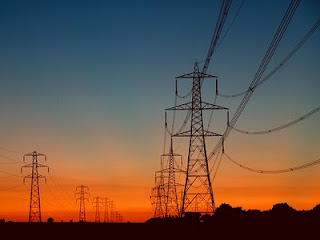The internets are abuzz lately with the news that Google has obtained for its subsidiary, Google Energy, the rights to buy and sell wholesale energy. The common reasons for this investment are known and accepted, but Google has a knack for taking the common and producing quite uncommon results. An exploration of Google’s past and current energy projects should yield some surprising future goals.
On February 18, the Federal Energy Regulatory Commission (FERC) granted Google Energy market-based rate authorization, which effectively means that Google’s subsidiary now has the right to buy and sell energy on the wholesale markets. The first thought through most people’s heads is that Google is starting up a utility company for residential or commercial markets. While the rights granted to Google Energy do allow for this, the company’s official statement is that it simply wants to be better able to manage its own energy costs given that it uses extreme amounts of electricity for its technology-intensive projects and infrastructure. Specifically, Google wants to have access to larger resources of renewable energy in its drive to become carbon neutral.
On a different page of the same website, Google lists the projects it is currently involved in to further the search for clean energy:
- RE<C – an initiative aimed at creating utility-scale renewable electricity that is cheaper than coal.
- RechargeIT – aimed at accelerating the adoption of plug-in vehicles and “smart charging” applications.
- Google PowerMeter – allows people to see detailed home energy information in near real-time right on their computer.
- Clean Energy 2030 – Google has been crunching the numbers to see how we could greatly reduce fossil fuel use by 2030.
- Solar Panels – [Google] switched on one of the largest corporate solar installations in the United States at [its] Mountain View headquarters.
In addition to these projects, states a CNET article, “Google has also invested hundred[s] of millions in green energy technology research and start-up companies with projects in wind, solar, solar thermal, and geothermal.” However, while its successful eSolar investment is considered by some to be its most notable achievement, the true strength of Google lies, as ever, in its software projects.
Beginning with Google PowerMeter, the hardware, software, and service package is available directly to consumers and allows tracking and control of personal energy usage. The idea behind the project is to encourage the population to pay closer attention to which appliances use energy, how much, when, and in what modes (e.g. Standby, On, PowerSaver). Feedback so far indicates that, “consumers really do tend to adjust their usage habits to save energy and money, once they come face to face with their own usage data.” (CNET)
Another important Google Energy software product is the smart-charging technology for electric and hybrid vehicles. Concerned that local traffic rush hours will lead hordes of drivers to charge their vehicles at the same time upon returning home (in turn requiring local power plants to temporarily increase output and therefore fuel consumption), Google developed a software solution to distribute energy bit-by-bit to vehicles all across the grid at different times. This idea is similar to and integrable with the smart-grid technology that would charge vehicles when grid power peaks and later borrow energy back from the vehicles when grid power dips.
Google isn’t the only one wading into the fledgling ancillary market of energy management. On Monday, February 22, IBM announced an agreement with the Tennessee Valley Authority, one of the largest power companies in the U.S., to manage its energy operations with Maximo Asset Management. The concept is the same: update the way energy is monitored and allocated to increase efficiency, output, and revenue. With its approach to consumer-oriented technology, however, it is likely that Google’s energy projects will yield more adaptable, user-friendly, and ultimately ubiquitous solutions than those of its competitors.
The bottom line here is that as we explore new sources for power and radically increase our demand and dependence, energy is fast becoming the most valuable commodity of the coming generations (if you think we’re already there, just wait). And as with any constant or increasing demand, greater efficiency is fully equal to an increase in availability. By saving on energy used, Google Energy’s solutions could effectively “produce” energy, making said solutions valuable and profitable. Additionally, in a world where the allocation and direction of energy is reliant on software, he-who-makes-such-software could easily become quite wealthy.
Do you think Google has its eyes on future energy profits? Through direct sales? Through an as-yet unrealised ancillary market? Comment and share this post to keep the discussion going.

 The internets are abuzz lately with the news that Google has obtained for its subsidiary, Google Energy, the rights to buy and sell wholesale energy. The common reasons for this investment are known and accepted, but Google has a knack for taking the common and producing quite uncommon results. An exploration of Google’s past and current energy projects should yield some surprising future goals.
The internets are abuzz lately with the news that Google has obtained for its subsidiary, Google Energy, the rights to buy and sell wholesale energy. The common reasons for this investment are known and accepted, but Google has a knack for taking the common and producing quite uncommon results. An exploration of Google’s past and current energy projects should yield some surprising future goals.

6 pings